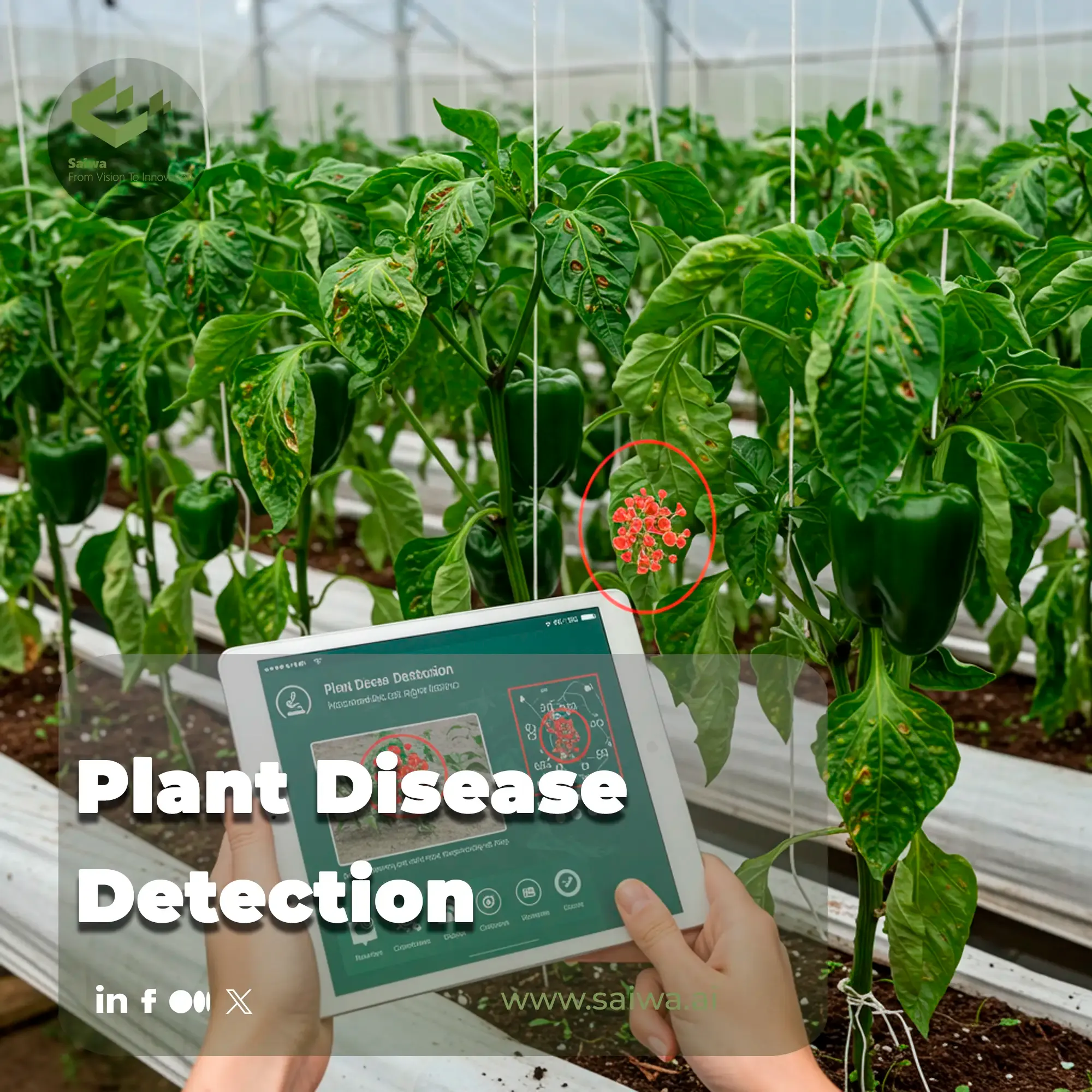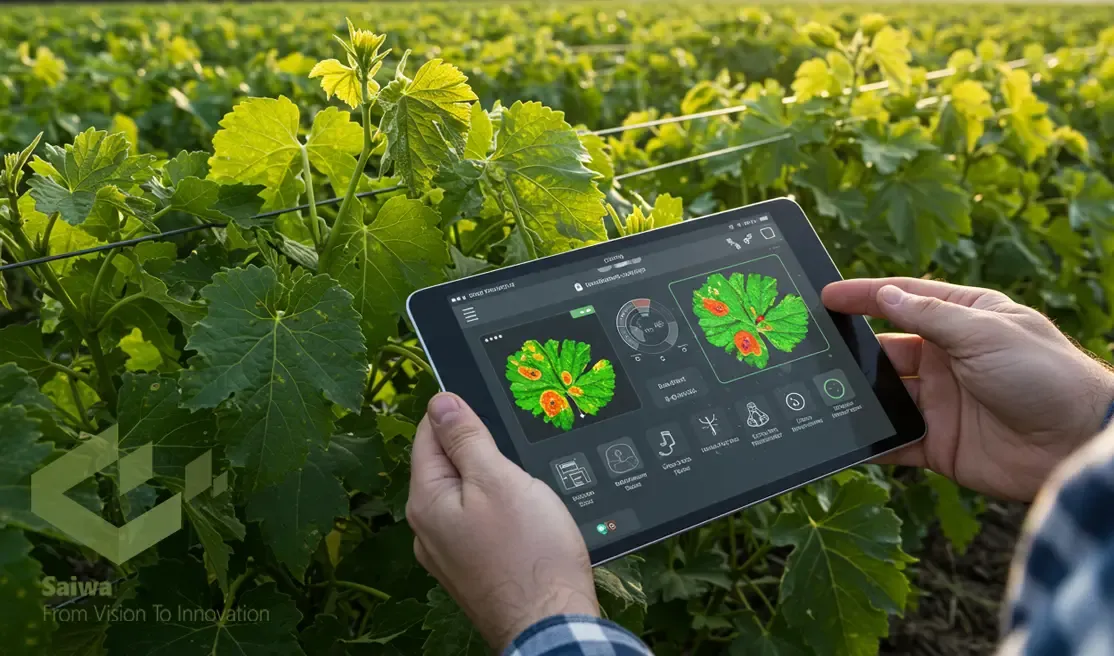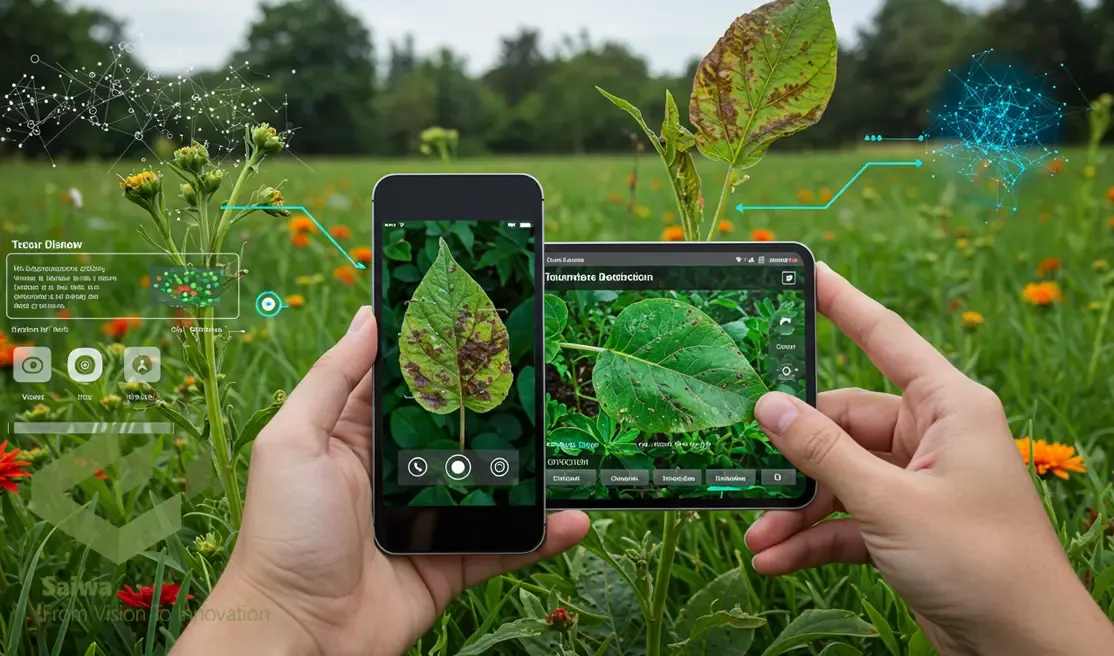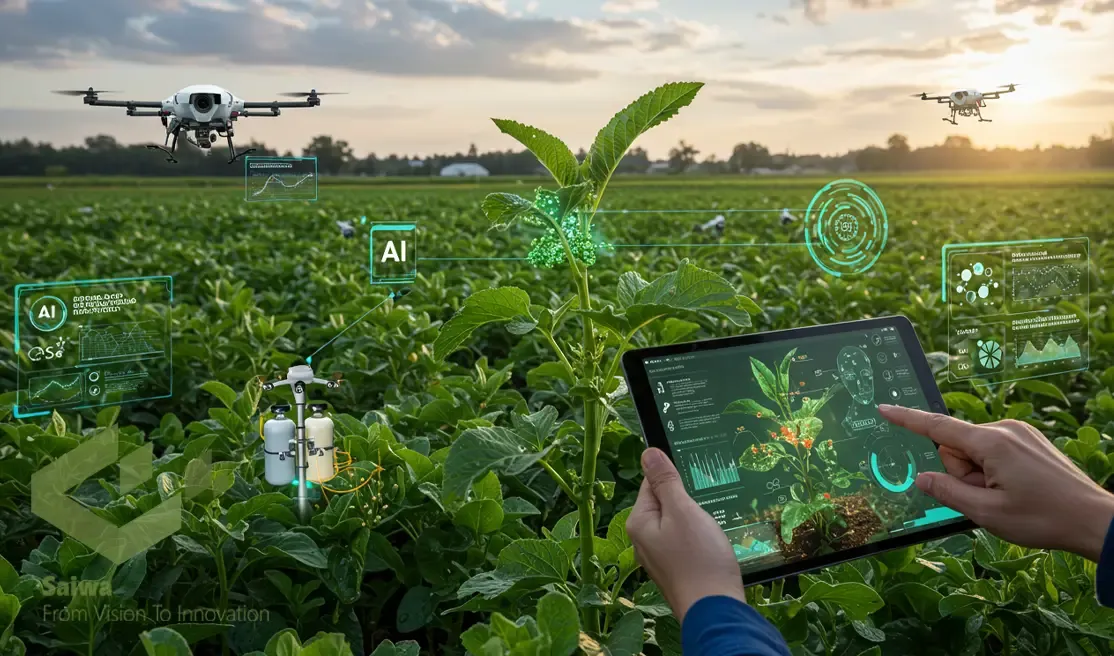Plant Disease Detection - A Key Strategy for Sustainable Crop Management

Ensuring global food security is directly threatened by the silent spread of crop diseases, which can decimate harvests before symptoms are even widely visible. Traditional diagnostic methods are often too slow and localized to mount an effective, large-scale response. This is where advanced AI transforms the agricultural landscape.
At Saiwa, we are at the forefront of this evolution, leveraging powerful tools like our Sairone platform to provide immediate, data-driven insights. This article explores the sophisticated technical strategies behind modern plant disease detection, moving from traditional practices to cutting-edge, scalable AI-driven solutions for sustainable crop management.
Why Early Detection Matters
The importance of early detection in agriculture cannot be overstated. Intervening at the initial stage of an infection is the difference between a manageable localized issue and a full-blown epidemic that could compromise an entire season's yield.
Early, precise identification allows for targeted treatments, drastically reducing the reliance on broad-spectrum chemical applications and minimizing input costs. This proactive approach not only safeguards immediate harvests but also promotes long-term soil health and environmental sustainability, forming the bedrock of modern, efficient farming.
How Plant Diseases Are Detected Today
The field of diagnostics has evolved significantly, transitioning from centuries-old manual methods to highly sophisticated, automated systems. Understanding this spectrum of techniques reveals the technological leap that now enables proactive crop management. Let's explore these distinct approaches.

Traditional Approaches
For generations, plant disease identification relied on a combination of hands-on expertise and localized resources. These foundational methods include:
Visual scouting by experts or farmers: This involves physically walking through fields to identify visual cues of disease—a process that is laborious, prone to human error, and highly dependent on individual experience.
Laboratory-based testing: Sending physical plant samples to a lab provides highly accurate, definitive diagnoses. However, this method is time-consuming and expensive, making it impractical for continuous, large-scale monitoring.
Local agronomic extension services: Farmers have traditionally relied on regional experts for advice, but their availability can be limited, leading to delays in critical decision-making.
Modern Approaches and Techniques
Today's technological solutions integrate advanced imaging and artificial intelligence, offering unparalleled speed and accuracy. The modern approach to Plant Disease Detection is best understood through its two core components: a structured workflow for processing visual data and the sophisticated learning models that analyze it. This combination automates what was once a purely manual and intuitive process.
Image Processing Workflow:
Before any learning model can perform its magic, the raw visual data must be systematically refined. This crucial process involves a sequence of steps:
Preprocessing: Raw images captured in the field are rarely perfect. This stage enhances them by correcting lighting inconsistencies, removing background noise, and using segmentation techniques like K-Means clustering or U-Net to isolate the plant leaf from its surroundings.
Feature extraction: Here, the system quantifies the visual information. It extracts key descriptors related to color (histograms), texture (GLCM analysis), and shape from the segmented area to create a unique numerical signature for the symptoms.
Classification: The extracted feature vector is fed into a classifier. Simpler models like one-class Support Vector Machines (SVM) use these features to distinguish between healthy and diseased samples, forming the basis for Anomaly Detection.
Machine Learning & Deep Learning Models:
This is where automated learning brings immense power, as models learn to identify patterns directly from pixels without manual feature engineering. Key architectures in this space include:
CNNs (e.g., ResNet, MobileNet): Convolutional Neural Networks are the workhorses of modern computer vision. Models like ResNet and MobileNet have demonstrated accuracies often exceeding 98% on benchmark datasets by automatically learning hierarchical features, from simple edges to complex lesion patterns.
Vision Transformers (e.g., PlantXViT): A newer architecture gaining traction, Vision Transformers process images by treating them as a sequence of patches. This allows them to capture long-range dependencies across the image, offering a different and sometimes more robust way of understanding context.
Hybrid models: Some of the most effective solutions combine deep learning and traditional machine learning. A common approach involves using a pre-trained CNN to extract highly descriptive features, which are then fed into a more traditional but computationally efficient classifier like an SVM for the final diagnosis.

Scalable Detection: From Leaf to Landscape
Effective disease management requires insights at multiple scales. A single diseased leaf can be an early warning sign, but understanding its prevalence across a field or region is essential for strategic intervention. Modern Plant Disease Detection technologies are therefore designed to operate across a scalable hierarchy, which we can explore in more detail below:
Leaf-level: This is the most granular scale, often performed using smartphone applications like Agrio or handheld sensors. It allows for the detailed inspection of individual lesions, enabling a highly specific diagnosis of the pathogen or nutrient deficiency affecting a single plant.
Field-level: At this scale, technologies like drones equipped with high-resolution cameras become essential. By scanning an entire field, systems can create detailed maps pinpointing disease hotspots, enabling precision spraying and targeted resource allocation. This is a core capability of platforms like Sairone, which automates the analysis of drone imagery for comprehensive Plant health monitoring.
Region-wide: Leveraging satellite imagery and geospatial data, this scale provides a macroscopic view of crop health. It helps in tracking the spread of disease across large geographical areas, modeling epidemic risk, and informing regional agricultural policies.
Read Also: Nutrient Management Plans in Ontario: A Guide for Farmers
Benefits of Early, Accurate Detection
The shift towards AI-powered, data-driven disease detection unlocks substantial benefits that resonate across the agricultural value chain. By moving from reactive to proactive management, stakeholders can realize a more efficient and sustainable production system. Key advantages include:
Reduces crop loss and input costs: By identifying threats early, interventions are smaller, more targeted, and more effective.
Enables smarter resource use (e.g., precision spraying): Mapping disease hotspots means pesticides and fungicides are applied only where needed.
Supports sustainable practices by minimizing over-reliance on chemicals: This protects the environment, improves soil health, and aligns with consumer demands.
Challenges and Limitations
Despite its immense potential, the real-world implementation of automated Plant Disease Detection faces several technical and practical hurdles. These challenges must be addressed to ensure that these powerful tools are robust, reliable, and accessible to all. Among the most significant limitations we can identify:
Visual similarity between different diseases: Many distinct pathogens produce visually similar symptoms (e.g., yellowing or spots), which can confuse even advanced models.
Image quality: Field-captured images are affected by variable lighting, shadows, motion blur, and complex backgrounds (e.g., soil, other plants), degrading model performance.
Low technology access and internet coverage in rural regions: The full potential of cloud-based AI systems is limited in areas with poor digital infrastructure.
Need for more explainable AI to increase farmer trust: For many farmers, AI models operate as "black boxes." Building trust requires systems that can explain why they reached a particular diagnosis.
The Future of Plant Disease Detection

The next wave of innovation in Plant Disease Detection is already taking shape, driven by a convergence of more efficient hardware, smarter algorithms, and a focus on user trust. The evolution of this technology will likely be defined by three key trends we’re already beginning to see emerge:
Edge AI: Processing data directly on the device—be it a drone, tractor, or smartphone—eliminates the need for constant cloud connectivity. This reduces latency and makes powerful AI tools accessible in remote areas.
Few-shot learning: Training models on massive, perfectly labeled datasets is not always feasible. Few-shot learning techniques allow models to accurately identify new diseases from just a handful of examples, drastically speeding up deployment for emerging threats.
Explainable AI (XAI): As models become more complex, their ability to provide transparent, interpretable results will be paramount. XAI techniques help demystify the decision-making process, building the trust necessary for widespread adoption and enhancing tasks like Crop yield estimation by providing clearer risk factors.
Read Also : Crop Scouting Tools Every Farmer Should Use
Conclusion
The transition from manual inspection to automated systems marks a pivotal moment for agriculture. Intelligent and scalable Plant Disease Detection is no longer a futuristic concept but a practical strategy for ensuring a resilient and sustainable food supply. By embracing these data-driven tools, we can mitigate risks, optimize resources, and cultivate a healthier, more productive future for farming across the globe.
Note: Some visuals on this blog post were generated using AI tools.
